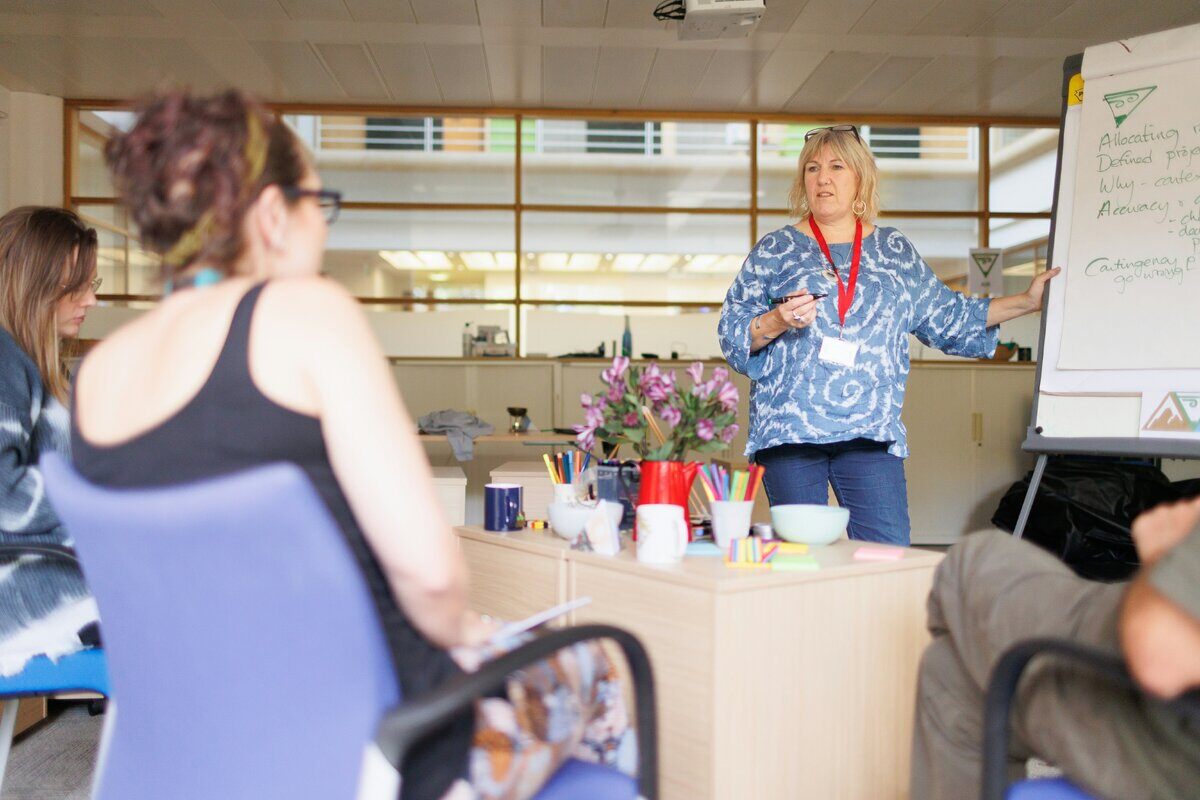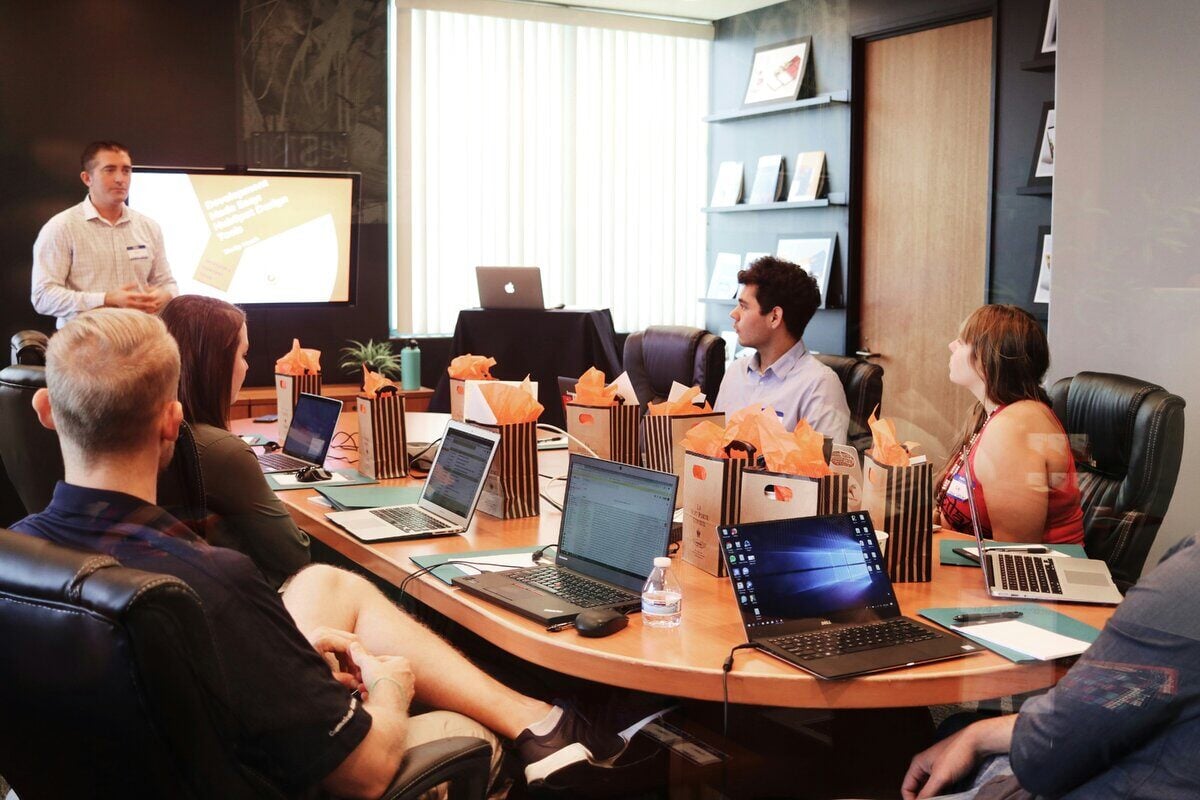
Beyond One-Size-Fits-All: The Power of Tailored Learning Experiences
According to one recent study, about 92% of employees who go through training programs that are "well-trained" say that the experience has a "favorable impact" on their level of engagement.
Essentially, when people feel like an employer has gone out of their way to equip them with the tools needed to succeed in a position, they have a more direct and long-term interest in doing so.
Why does that matter, exactly?
Because according to the experts at Gallup, annual employee engagement in the United States is only at about 33% - meaning that only about a third of the workforce is actually engaged with the jobs they're being paid to do.
Gallup also uncovered a direct link between employee engagement and many other performance-related outcomes for a business, including but not limited to:
- Happy, engaged employees tend to be more productive (and thus more profitable) on average.
- Businesses with engaged employees tend to experience lower turnover.
- There are typically fewer safety incidents.
- Internal theft (when applicable) is diminished.
- There are fewer instances of absenteeism.
- This is all reflected in the outward-facing parts of the business, meaning that customer loyalty and engagement tend to get a boost, too.
If you want to be a more successful business, you have to create a better experience for your customers.
To do that, you need to create a better experience for your workers.
To get to that point, you need to invest in ongoing training to meet their needs.
In an effort to achieve these results as quickly as possible, you may be tempted to invest in a "one size fits all" option.
These are typically programs that already exist and that make vague promises to help you "increase productivity by X%" or "improve profitability by $Y."
In no uncertain terms, the importance of choosing custom training solutions that are actually built with your business in mind cannot be overstated.
This is true for a wide range of different reasons, all of which are worth a closer look.
The Limitations of Off-the-Shelf Training Solutions
One of the major reasons why off-the-shelf training solutions often fall short is because people get too distracted by their number one benefit: their cost-effectiveness.
These solutions do offer routine training in a general sense, but they're also in no way designed to meet the unique needs of a business.
Think about the workforce of your closest competitor.
You're probably looking at a very different organization than your own - even though you're operating in the same industry and are targeting essentially the same audience.
The risks you face are unique.
Your goals are unique.
Your strategy is unique.
All these factors dictate precisely how your employees need to be trained, and you simply cannot get to that point with something designed to appeal to the broadest audience possible.
This segues into what is ultimately one of the "dirty little secrets" of these types of off-the-shelf trailing solutions - they're not nearly as cost-effective as they first appear.
Yes, it's true that the initial price tag of something that already exists versus something that needs to be created from the ground up after a skill gap assessment will be lower.
But ineffective training can result in decreased employee morale, increased turnover, and lost productivity.
Additionally, organizations may incur costs associated with retraining, lost business opportunities, and diminished customer satisfaction due to inadequately trained staff.
These are all reasons why organizations need to be proactive about any signs that their current training approach is lacking.
If your current training is lacking, your workers aren't nearly as productive as they could be, and you're losing money in the short-term.
If you attempt to correct things by investing in generic training solutions, you're only taking a bad problem and making it even worse.
Common signs that you may need to reassess your approach to training include but are certainly not limited to ones like:
- Low engagement metrics.
- High rates of training course dropouts.
- You're getting a lot of feedback indicating that people are confused, or they don't feel like the material is appropriate.
- Poor performance metrics that persist after training has been completed.
Identifying Your Target Audience: A Critical Step in Training Design
Having said all of that, it's equally important to acknowledge that simply going with custom training solutions isn't enough to guarantee your long-term success.
You still need to put in the work of identifying what issues you're having, why they're occurring, and what specific action can be taken to address these challenges.
That begins with a learner analysis, which is where you look at your target audience characteristics to better understand who they are, what they need, and how to best play to their strengths.
Begin by collecting demographic data like age, job role, experience level, and more.
You'll also want to learn as much as you can about not only someone's learning style, but also their career goals, and any challenges that they think they're facing.
A lot of this can be obtained through surveys, interviews, and even focus groups.
Then, you'll be able to dive deeper into their learning preferences and motivations.
Different learners can sometimes be wildly different when it comes to not only how they need to digest information, but what motivates them to absorb that information in the first place.
Some may prefer visual content, for example, while others thrive in hands-on environments.
Recognizing these differences can help in creating a more inclusive learning experience that resonates with a diverse workforce.
Once you have collected as much information as possible, you can use these insights to better understand the people you'll be speaking to.
You can also create detailed learner personas, which are an invaluable resource for targeted training design.
Creating learner personas involves taking all the demographic data you've compiled and generating profiles that represent different segments of your audience.
You can then create a more custom experience for each group, playing to how they like to learn and increasing the program's overall chance at success in the future.
Assessing Knowledge and Skill Gaps: The Foundation of Effective Training
As referenced, arguably the most essential step to guarantee success with your training will involve a thorough skills gap assessment.
This involves systematically identifying discrepancies between A) current employee competencies, and B) desired skill levels.
This can include competency mapping, skills audits, and performance evaluations, and more.
Understanding these gaps is critical for designing relevant training programs that fill these needs.
During this time, resources like assessments, surveys, and performance data are enormously helpful.
If someone needs to be able to perform a particular task to successfully complete their job, and you have objective performance data that shows they aren't good at doing that, you know exactly what your training program needs to target.
Anything beyond that scope might be helpful in a general sense, but it certainly wouldn't be relevant to what you're trying to accomplish.
This may be an oversimplified example, but it's still based on solid logic.
Once those gaps have been identified, you need to prioritize who you're training (and how) based on your immediate needs.
Think about business impact, urgency, and even learner readiness when making decisions.
If one group of people needs to be trained in a way that will derive short-term benefit for your business, obviously that's a priority over helping people hone the type of skills that will take literal years to properly develop.
Prioritizing training needs based on the gap analysis results will help make sure that your resources are being allocated as effectively as possible, which goes a long way toward maximizing the impact of your training investments as well.
Crating Custom, Tailored Learning Experiences
Yes, it will require a fair amount of work to get to this point - but the benefits show that the investment is more than worth it.
When you create personalized learning paths, people can progress at their own pace.
They can focus on the areas where they need the most improvement without worrying about "holding anyone back."
This can increase engagement, which increases retention, which means that more people are likely to complete the training, and you'll achieve better outcomes.
Because there are many different learning styles out there that you'll be dealing with, you'll want to use diverse content to get your message to the people who need it.
That includes not only videos and interactive sessions, but also things like group discussions and blended learning as well.
LX Studio's Approach to Learning-Centric Training Design
At LX Studio, we pride ourselves on taking an innovative new approach to learning - one that helps create the custom solutions you need to prioritize learner needs wherever possible.
As previously mentioned, the development process begins by first coming to know as much about your business, its goals, and its people as possible.
As we develop more insight into your target audience (along with their strengths and weaknesses), we'll be able to create the type of engaging, interactive content that is built with their specific learning goals in mind.
In other words, we don't want to start with the goals and hope that generalized content brings people to the level you need them to be at.
We want to start with the people and help build a bridge that connects with those goals as effectively as possible.
A big part of our process involves Learning Environment Modeling, which is the only results-focused, university-backed learning strategy methodology that helps organizations like yours deliver the evidence-based, transformational learning experiences people need to succeed on their own terms.
Not only is our Learning Environment Modeling approach designed to be simple to the point where it can be taught in a matter of minutes, but it also invites collaboration as well.
It gives people a common understanding of how a course is designed, helping teams from diverse backgrounds contribute ideas and perspectives that benefit the group as a whole.
But when you also consider that using this shared language and visual modeling introduces a new level of focus and clarity that off-the-shelf training solutions lack, it becomes a perfect storm in the best possible way.
But LX Studio also prioritizes continuous feedback to refine learning experiences moving forward - meaning that our solutions only get better as your people spend more time with them.
We solicit learner input regularly throughout the training process, all to understand what is working and what might not be.
That way, we can make real-time adjustments to make sure that the training remains just as relevant and effective a year from now as it is today.
If you'd like to find out more information about the power of tailored learning experiences and why this is one investment your organization needs to make, or if you'd just like to discuss your own needs with someone in a bit more detail, please don't hesitate to contact the LX Studio team today.






